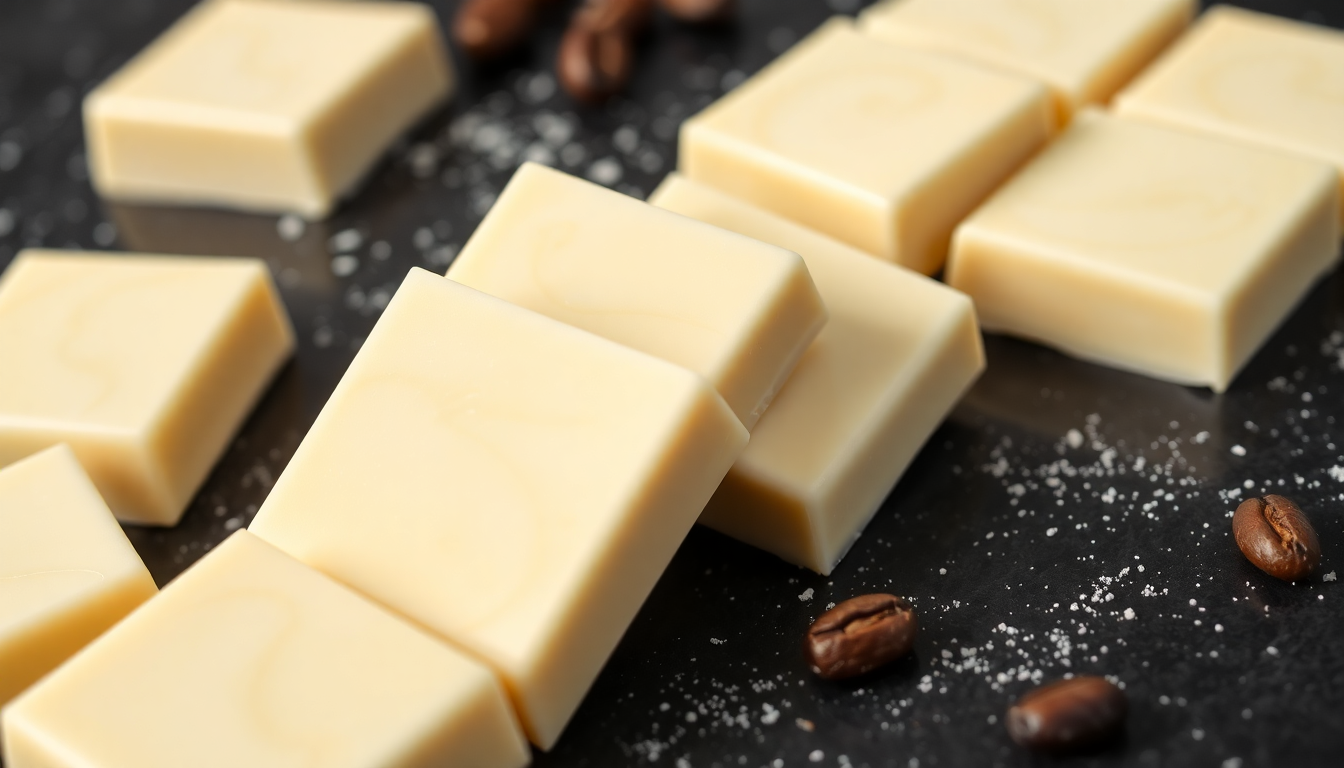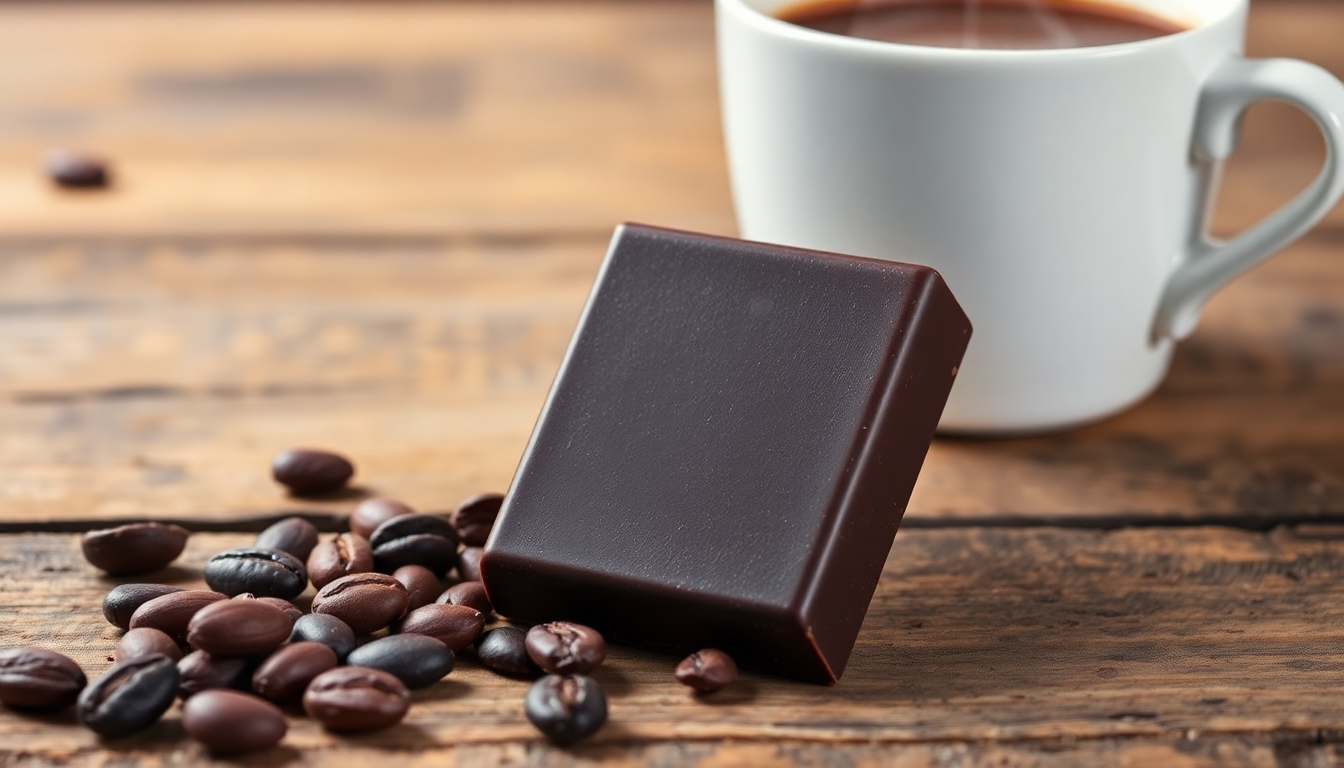
What is White Chocolate: Understanding the Sweet, Creamy Confection That Divides Chocolate Lovers
White chocolate stands as one of the most debated confections in the culinary world, sparking passionate discussions among chocolate enthusiasts about its authenticity, composition, and place in the chocolate family. Unlike its darker counterparts, white chocolate presents a unique profile that challenges traditional chocolate definitions while offering its own distinct appeal and versatility in both confectionery and culinary applications.
Understanding what white chocolate truly is requires examining its ingredients, production methods, and the ongoing debate about whether it deserves the "chocolate" designation. This comprehensive exploration will clarify the mysteries surrounding white chocolate while providing insights into its history, variations, and healthier alternatives that maintain the creamy, indulgent experience many people love.

The Essential Ingredients: What Makes White Chocolate
Primary Components and Their Roles
White chocolate's composition differs fundamentally from traditional dark or milk chocolate, consisting of three primary ingredients that create its distinctive characteristics:
Cocoa Butter: The foundation of white chocolate, cocoa butter is the natural fat extracted from cacao beans during the chocolate-making process. This pale yellow fat provides white chocolate with its signature smooth, melt-in-your-mouth texture and subtle, almost floral aroma. Cocoa butter's unique crystalline structure gives white chocolate its characteristic snap when broken and its luxurious mouthfeel when consumed.
Sugar: Responsible for white chocolate's sweet profile, sugar content in white chocolate is typically higher than in dark chocolate varieties. This elevated sweetness level helps balance the neutral flavor of cocoa butter and creates the confection's appealing taste that attracts those who prefer milder chocolate experiences.
Milk Solids: These dairy components contribute to white chocolate's creamy consistency and provide subtle dairy notes that enhance its overall flavor profile. Milk solids also help create the smooth texture that makes white chocolate ideal for various culinary applications.
The Crucial Absence: No Cocoa Solids
What fundamentally distinguishes white chocolate from other chocolate varieties is the complete absence of cocoa solids—the dark, flavorful component that gives traditional chocolate its characteristic color, robust flavor, and many of its health benefits. This omission is precisely what fuels the ongoing debate about white chocolate's legitimacy as "real" chocolate.
Without cocoa solids, white chocolate lacks the antioxidants, flavonoids, and complex flavor compounds that make dark chocolate celebrated as both a delicious treat and a potential health food. This absence also explains why white chocolate doesn't provide the same bitter notes or intensity that chocolate purists often seek.
The Manufacturing Process: From Cocoa Butter to Confection
Production Methods and Quality Control
Creating high-quality white chocolate requires precise temperature control and careful ingredient balance. The process begins with melting cocoa butter at controlled temperatures to preserve its delicate flavor profile and ensure proper texture development.
During production, manufacturers blend the melted cocoa butter with precisely measured amounts of sugar and milk solids, often adding vanilla or other flavorings to enhance the final product's taste complexity. The mixture undergoes conching—a process of continuous mixing that develops smooth texture and removes any undesirable flavors.
Tempering and Final Formation
Like other chocolate varieties, white chocolate requires tempering to achieve its characteristic glossy finish and satisfying snap. This process involves carefully controlling cooling temperatures to encourage the formation of stable crystal structures that give white chocolate its appealing visual and textural properties.
The final product should exhibit a pure white to pale ivory color, smooth texture, and clean release from molds without blooming or discoloration that might indicate improper processing or storage.
Legal Standards and Industry Regulations
FDA Requirements and International Standards
In the United States, the Food and Drug Administration (FDA) has established specific criteria that products must meet to be legally labeled as "white chocolate." These requirements include:
- Minimum 20% cocoa butter content
- At least 14% milk solids
- Maximum 55% sugar content
- No more than 3.5% milkfat
These standards ensure consistency and quality while distinguishing legitimate white chocolate from cheaper imitations that might use vegetable oils instead of cocoa butter.
European and International Variations
European regulations follow similar principles but may have slightly different percentage requirements. The European Union requires a minimum of 20% cocoa butter but allows for variations in milk solid content. These international standards help maintain quality expectations while accommodating regional taste preferences and production traditions.
Understanding these regulations helps consumers identify authentic white chocolate products and avoid confections that use inferior ingredients or fail to meet established quality standards.
The Great Debate: Is White Chocolate Really Chocolate?
Arguments for Authenticity
Supporters of white chocolate's legitimacy point to several compelling factors that support its inclusion in the chocolate family:
Cocoa Butter Origin: Since white chocolate contains substantial amounts of cocoa butter—a direct derivative of cacao beans—it maintains a clear connection to the original chocolate source. This ingredient provides the fundamental fat structure that defines chocolate's mouthfeel and melting characteristics.
Regulatory Recognition: Government food agencies worldwide officially recognize white chocolate as a legitimate chocolate variety, establishing legal precedent for its classification within the chocolate category.
Culinary Applications: White chocolate performs similarly to other chocolate varieties in baking, candy making, and dessert preparation, demonstrating functional equivalence in professional culinary contexts.
Arguments Against Recognition
Critics of white chocolate's chocolate status present equally valid concerns:
Absence of Cocoa Solids: The lack of cocoa solids means white chocolate doesn't contain the flavonoids, antioxidants, and complex flavor compounds that define traditional chocolate's character and health benefits.
Flavor Profile Differences: White chocolate's mild, sweet taste bears little resemblance to the rich, complex flavors associated with authentic chocolate experiences.
Historical Context: Traditional chocolate definitions have historically required the presence of cocoa solids, making white chocolate a relatively modern deviation from established chocolate principles.
Flavor Profile and Culinary Characteristics
Taste Experience and Sensory Properties
White chocolate offers a distinctly different sensory experience compared to traditional chocolate varieties. Its flavor profile features pronounced sweetness with subtle vanilla notes and a mild, buttery undertone derived from cocoa butter. The absence of cocoa solids creates a clean, neutral base that readily accepts additional flavors and aromatics.
The texture of quality white chocolate should be smooth and creamy, melting evenly on the tongue without grittiness or waxy residue. This luxurious mouthfeel makes white chocolate particularly appealing in premium confections and dessert applications.
Culinary Versatility and Applications
White chocolate's mild flavor and neutral color make it exceptionally versatile in culinary applications:
Dessert Enhancement: White chocolate pairs beautifully with fruit flavors, particularly berries, citrus, and tropical fruits, where its sweetness complements rather than competes with natural fruit acidity.
Color Contrast: The light color provides striking visual contrast when combined with darker ingredients, making it valuable for decorative applications and artistic dessert presentations.
Flavor Infusion: White chocolate readily accepts additional flavors like vanilla, almond, coconut, or spices, allowing for creative variations and custom flavor profiles.

Health Considerations and Nutritional Profile
Nutritional Content Analysis
White chocolate's nutritional profile differs significantly from dark chocolate due to its ingredient composition. It typically contains higher levels of sugar and saturated fat while lacking the antioxidants and beneficial compounds found in cocoa solids.
Caloric Density: White chocolate is calorie-dense, with approximately 150-160 calories per ounce, primarily from sugar and cocoa butter. This high caloric content makes portion control important for those managing weight or blood sugar levels.
Lack of Antioxidants: Unlike dark chocolate, white chocolate provides minimal antioxidant benefits since it contains no flavonoids or other beneficial compounds derived from cocoa solids.
Sugar Content: The high sugar content can contribute to blood sugar spikes and may not be suitable for individuals with diabetes or those following low-sugar diets.
Considerations for Special Diets
Traditional white chocolate poses challenges for various dietary restrictions:
Dairy Content: The milk solids make conventional white chocolate unsuitable for vegans, those with lactose intolerance, or individuals following dairy-free diets.
Sugar Concerns: High sugar content makes it inappropriate for ketogenic, low-carb, or diabetic-friendly eating plans.
Processing Concerns: Some white chocolate products may contain additives, artificial flavors, or lower-quality ingredients that don't align with clean eating preferences.
Healthier Alternatives and Modern Innovations
Sugar-Free White Chocolate Options
The growing demand for healthier alternatives has led to innovative sugar-free white chocolate formulations that maintain the creamy texture and sweet taste while addressing health concerns.
These alternatives typically use natural sweeteners like erythritol, stevia, or monk fruit extract to achieve sweetness without the glycemic impact of traditional sugar. For those seeking guilt-free indulgence, Sugar Free Coconut Milk Chocolate offers a creamy, light-colored alternative that provides the satisfaction of white chocolate without added sugars.
Vegan and Dairy-Free Alternatives
Modern food technology has enabled the creation of plant-based white chocolate alternatives that eliminate dairy while maintaining the desired texture and flavor characteristics. These products typically replace milk solids with plant-based alternatives like coconut milk powder, almond milk powder, or other non-dairy options.
The Sugar Free Chocolate Bar Bundle includes innovative chocolate varieties that provide creamy, satisfying experiences without traditional dairy ingredients, making them suitable for those with various dietary restrictions.
Coconut-Based Innovations
Coconut-based white chocolate alternatives have gained popularity for their natural sweetness, creamy texture, and nutritional benefits. Coconut provides healthy medium-chain triglycerides (MCTs) while creating a luxurious mouthfeel similar to traditional white chocolate.
These alternatives often incorporate additional beneficial ingredients like vanilla bean, mineral-rich salts, or other natural flavor enhancers that provide complexity beyond simple sweetness.
Quality Indicators and Selection Guidelines
Identifying Premium White Chocolate
When selecting white chocolate, several quality indicators help distinguish superior products from inferior alternatives:
Cocoa Butter Content: Look for products listing cocoa butter as the first ingredient, indicating substantial cocoa butter content rather than cheaper vegetable oils.
Color Appearance: Quality white chocolate should have a pale ivory or cream color rather than bright white, which may indicate excessive processing or artificial whitening.
Ingredient Simplicity: Premium white chocolate typically features short ingredient lists with recognizable components and minimal artificial additives.
Texture and Snap: High-quality white chocolate should break cleanly with a satisfying snap and melt smoothly without grittiness or waxy residue.
Storage and Handling Considerations
Proper storage is crucial for maintaining white chocolate's quality and preventing common issues like blooming, discoloration, or texture degradation. Store white chocolate in cool, dry conditions away from strong odors, as it readily absorbs surrounding aromas.
Temperature fluctuations can cause bloom—a grayish or white discoloration that, while not harmful, affects appearance and texture. Consistent storage temperatures between 60-70°F (15-21°C) help maintain optimal quality.
Historical Context and Cultural Impact
Origins and Development
White chocolate's history begins in the 1930s when Nestlé developed the first commercial white chocolate product as a way to utilize excess cocoa butter from their chocolate manufacturing processes. This practical solution to production efficiency evolved into a popular confection that found its own market niche.
The invention represented both innovation and resourcefulness in the chocolate industry, demonstrating how byproducts could be transformed into desirable consumer goods through creative product development.
Cultural Acceptance and Market Evolution
Over the decades, white chocolate has evolved from a utilitarian use of excess cocoa butter to a sophisticated ingredient in premium confections and desserts. Its acceptance in high-end pastry and chocolate-making has legitimized its place in the culinary world, regardless of debates about its chocolate authenticity.
Modern variations include flavored white chocolates, artisanal creations with unique inclusions, and innovative formulations that address health and dietary concerns while maintaining the essential characteristics that make white chocolate appealing.
Common Misconceptions and Clarifications
Addressing Popular Myths
Several misconceptions about white chocolate persist in popular culture and consumer understanding:
Myth: White chocolate contains no cacao products: While white chocolate lacks cocoa solids, it does contain cocoa butter, which is derived directly from cacao beans and provides the connection to the chocolate family.
Myth: All white chocolate is artificial: Quality white chocolate uses natural ingredients and traditional chocolate-making techniques, though some lower-quality products may contain artificial components.
Myth: White chocolate has no nutritional value: While it lacks the antioxidants of dark chocolate, white chocolate still provides energy and small amounts of minerals from its cocoa butter content.
Understanding Quality Variations
Not all white chocolate products offer the same quality or experience. Mass-produced varieties may use vegetable oils instead of cocoa butter, artificial flavors instead of natural vanilla, and excessive amounts of sugar or other additives that compromise both taste and nutritional value.
Understanding these differences helps consumers make informed choices and appreciate the distinction between premium white chocolate and cheaper alternatives that may not meet traditional standards or expectations.
Future Trends and Innovations
Emerging Developments in White Chocolate
The white chocolate category continues evolving with innovations that address modern consumer preferences for healthier, more sustainable, and ethically produced confections. These developments include:
Alternative Sweetening Systems: Advanced natural sweeteners that provide improved taste profiles while reducing glycemic impact and caloric density.
Functional Ingredients: Addition of beneficial compounds like probiotics, adaptogens, or superfood ingredients that enhance nutritional value without compromising taste.
Sustainable Sourcing: Increased emphasis on ethically sourced cocoa butter and other ingredients that support environmental and social responsibility.
Plant-Based Innovations
The growing plant-based movement has spurred development of innovative white chocolate alternatives that eliminate all animal products while maintaining the sensory characteristics that make white chocolate appealing. These products often incorporate coconut, nuts, or other plant-based fats to achieve the desired texture and mouthfeel.
These innovations represent the intersection of traditional confectionery techniques with modern dietary preferences and health consciousness, creating products that satisfy both nostalgic cravings and contemporary lifestyle choices.
Conclusion: Embracing White Chocolate's Unique Place in Confectionery
Whether or not white chocolate qualifies as "real" chocolate may ultimately be less important than recognizing its unique contributions to the culinary world and its ability to provide pleasure and satisfaction to those who enjoy it. The ongoing debate reflects the passionate nature of chocolate appreciation and the importance of understanding what we consume.
For consumers seeking white chocolate experiences, the key lies in understanding quality indicators, ingredient compositions, and available alternatives that align with personal health goals and dietary preferences. Modern innovations have created options that maintain the essential appeal of white chocolate while addressing contemporary concerns about sugar content, dairy inclusion, and overall nutritional impact.
The evolution of white chocolate from a practical solution for excess cocoa butter to a sophisticated confectionery ingredient demonstrates the dynamic nature of food innovation and consumer preference adaptation. As health consciousness continues to influence food choices, we can expect further developments in white chocolate alternatives that preserve the beloved characteristics while enhancing nutritional profiles.
Understanding what white chocolate is—both its traditional composition and modern variations—empowers consumers to make informed choices that align with their taste preferences, dietary needs, and health objectives. In this context, white chocolate's place in the confectionery world is secure, whether purists consider it "real" chocolate or not.
The future of white chocolate likely lies in continued innovation that preserves its essential appeal while addressing evolving consumer demands for healthier, more sustainable, and more inclusive confectionery options. This evolution ensures that white chocolate will continue to bring joy and satisfaction to chocolate lovers while adapting to meet the needs of health-conscious and environmentally aware consumers.

Claire Bennett
I'm Claire, a chocolate lover and artisan based in a small town where I run a tiny home kitchen dedicated to exploring everything chocolate. From single-origin dark bars to creamy ganache and handmade truffles, I find joy in working with all types of chocolate. I believe chocolate has a story, and I love bringing that story to life through humble, heartfelt creations.



Leave a comment
This site is protected by hCaptcha and the hCaptcha Privacy Policy and Terms of Service apply.